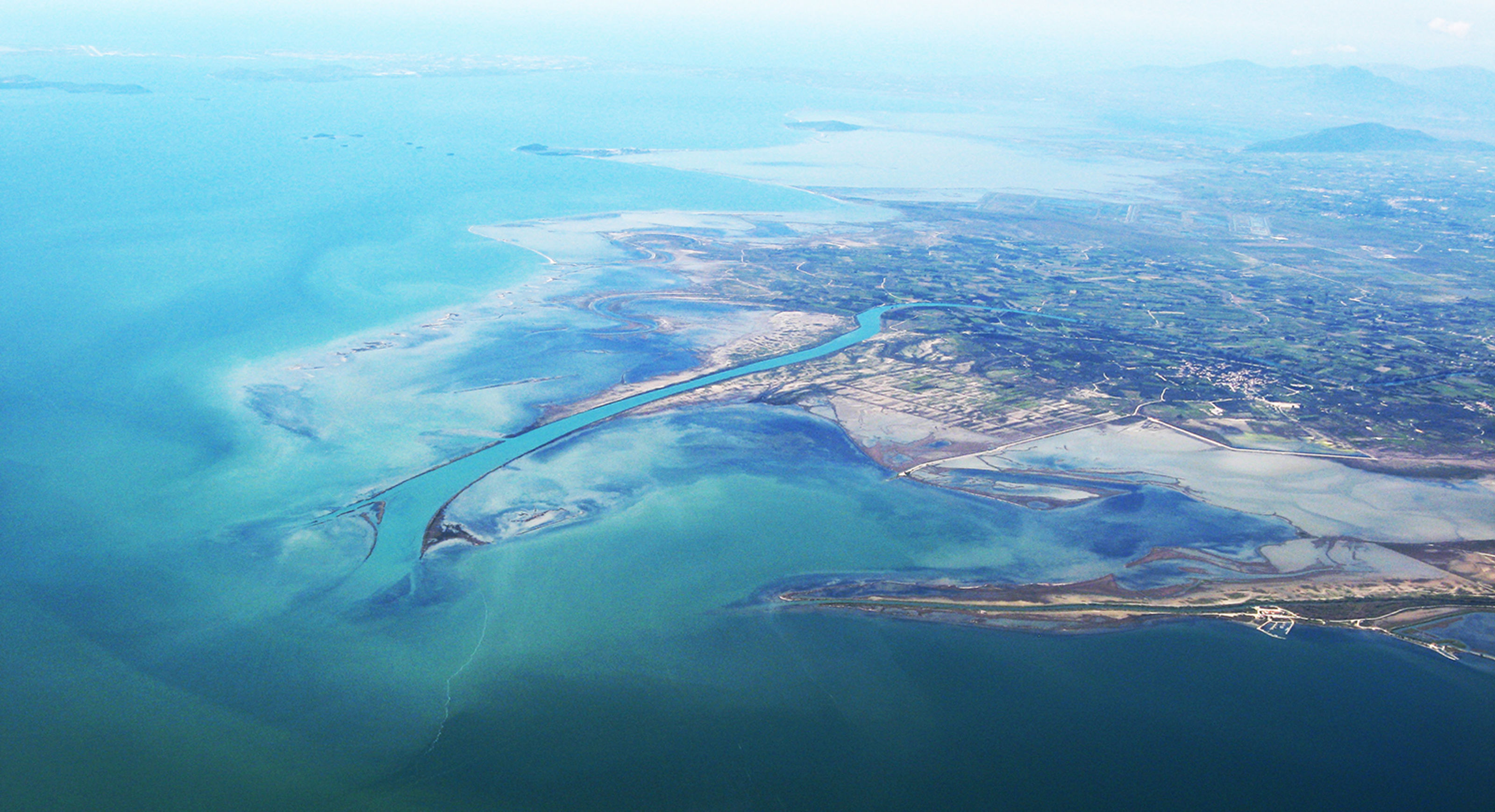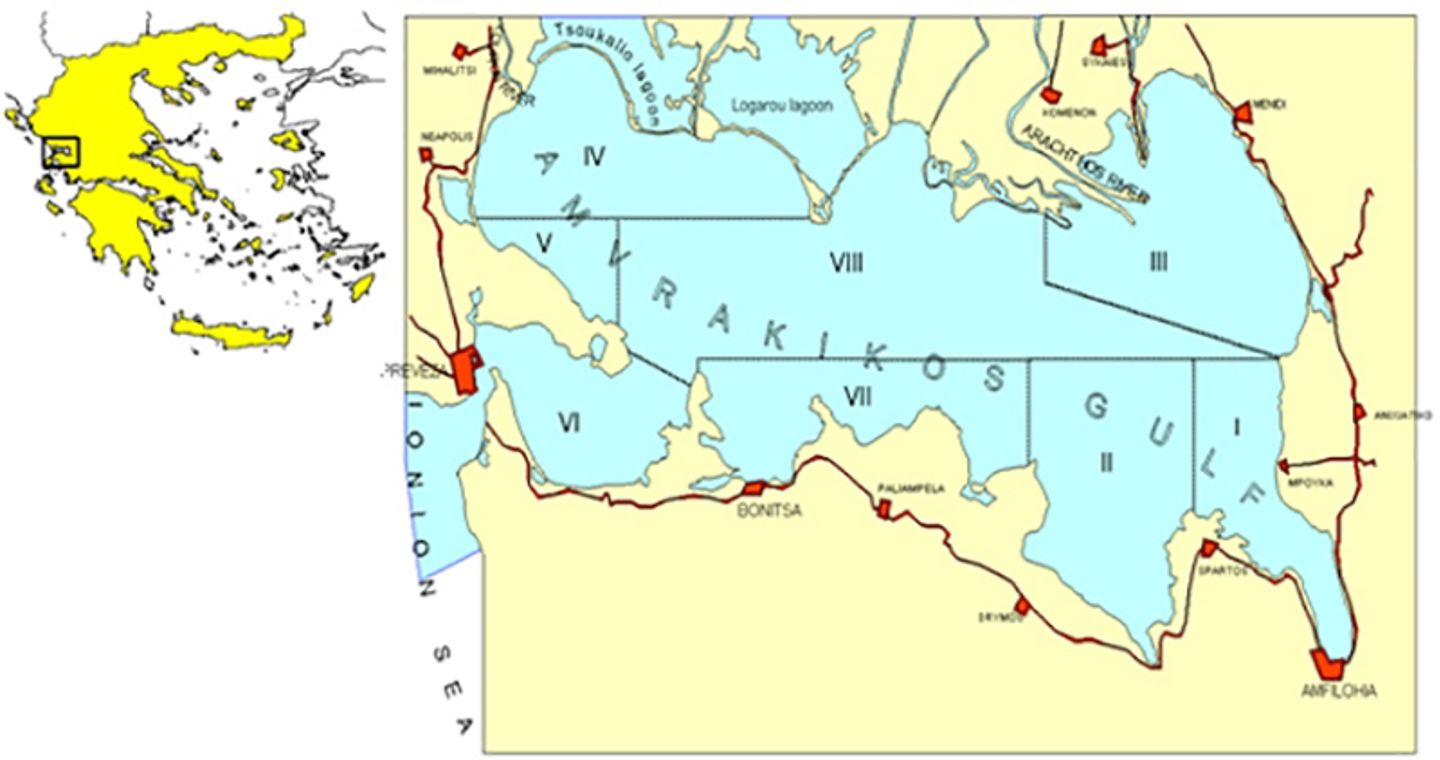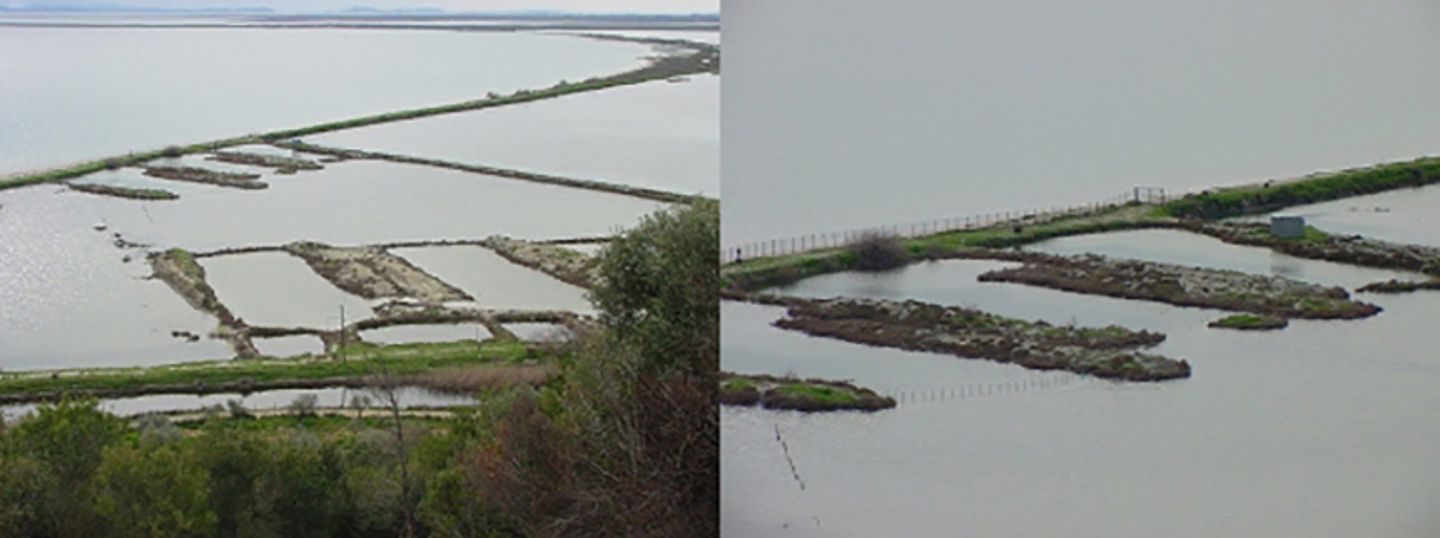- NGI /
- Projects /
- Case studies /
- Amvrakikos Gulf, Greece
Amvrakikos Gulf, Greece
Amvrakikos Gulf is a special ecosystem located in Western Greece.

Amvrakikos Gulf is shared by 3 prefectures: the prefecture of Etoloakarnania (whole south and east coastline), the prefecture of Preveza (one quarter of the north and the western coastline) and the prefecture of Arta (almost all the north coastline).

The north part of the gulf is characterised by an extensive system of wetlands and lagoons formed by the 2 main rivers of Louros and Arachthos that flow into the gulf. The lagoons are: Rodia, Tsoukalio, Avleri, Tsopeli and Logarou with an area of approximately 15,000 ha and a number of small lagoons ranging from 10-100 ha. This extensive wetlands system is currently under protection according to RAMSAR convention and there are a number of LIFE and TERRA projects ongoing for the management of the area (DG XI).
However, the management of the area from the local NGO's is not strict as it should be and numerous illegal activities as field burning and garbage dumping takes place despite the EU funding for the rehabilitation of the area. The morphology of the land is in general, flat and the main use is agriculture and livestock. There exist also 3 land-based eel farms. Only one city is located on the north coast: the city of Koronisia with a fishing port. In addition, 3 fishing vessel refuges are located in the north coastline.

The coastline of the south region is rough with steep coastal slopes mainly in the central part. In the eastern and western parts of the south gulf coast, the land is more flat and the main activity is agriculture. Numerous greenhouses operate in the western part. The local airport is also located in the west part near the gulf entrance (Aktion). There exist 3 cages fish farms and 1 hatchery in the central part. In addition, the local air force fuel depot is located in the southwestern area. Only one city (Vonitsa city) and several small villages are located on the south shoreline. Several olive oil plants exist in the area and which drain their effluents directly in the sea.

The eastern part of the gulf exhibits very rough morphology with steep mountainous slopes (more than 300 m) directly on the shoreline. Two cities (Amfilohia and Menidi) with commercial harbours and several small villages are located in the eastern region. Also there are 2 fishing vessel refuges located in the area. Great pollution and frequent water blooms are reported in this region due to extensive agriculture and drainage of polluted waters directly in the gulf. The deepest part of the gulf is located in this area (58 m) and anoxic conditions prevail below 35 m.
Great pollution from the streams that drain to the sea as well as the coastline (urban sewage etc.) was observed throughout the project. The weather conditions (prevailing strong winds from the west and the large fetch) accumulate garbage and pollutants in this area affecting tourism activities. Three marine fish cage farms and one hatchery operate in this area.

The western part is more developed because of the existence of the city of Preveza and the great commercial harbour for liners as well as fishing and recreation vessels. In the vicinity, the yacht marinas of Aktio and yacht maintenance facilities are located. The highway towards the Greek-Albanian border passes from Aktio through ferries to Preveza and then continues north. There exists also an industrial area with local factories close to the shoreline. In addition, tourism is greatly developed due to the harbour, the airport, the developed tourist infrastructure (hotels, service/maintenance, car rentals etc.) as well as the developed archaeological sites.
Around the gulf there exist today 3 big coastal cities with 5,000-10,000 inhabitants (Amfilohia, Vonitsa and Preveza) and a number of small villages close or in a range of 200 m from the coastline. All these urban areas do not have a system for sewage treatment and the all sewage flow into the gulf. The construction of the treatment plants has started 10 years ago with the support of the EU but until today only a very small percentage of the works have been completed.

The identified sources of pollution in the gulf are the following. These sources have turned Amvrakikos Gulf into a eutrophic region where water blooms occur during winter:
- Agriculture run-offs from the northern and eastern side of the gulf through the rivers of Louros and Arachthos as well as agriculture drainage canals which all flow into the gulf
- Sewage pollution from the coastal towns of Preveza, Aktion, Vonitsa, Amfilohia, Mpouka and Menidi
- Seasonal pollution from uncontrolled tourist installations (campings) located on the south coast
- Pollution from military installations and fuel storages in the eastern part of the gulf
- Leaks from fuel tanks of SHELL and MAMIDAKIS companies located on shore at the south-eastern part of the gulf, near the city of Amfilohia
- Commercial harbour works in the city of Amfilohia and Preveza. Especially in the Amfilohia harbour, throughout the year, motorships from Italy unload high amounts of fertilizers part of which is discarded accidentally into the sea due to pure handling procedures during unloading. The fertilisers are not stored near the coast.
In addition to the above, the construction of numerous hydroelectric power dams, water abstraction and irrigation barriers as well as irrigation dams and reservoirs upstream Louros and Arachthos rivers have stopped the water flow downstream and into the gulf, preventing also the suspended solids from flowing into the gulf.

The ecosystem of Amvrakikos gulf - due to the eutrophic conditions established today - has shifted to a pelagic form. The extensive water blooms occurring throughout the gulf (Ceratium spp, Volvox spp were recorded during this study) have caused the increase of the pelagic fish populations of sardines and anchovies (Engraulis, Sardinella, Alosa). These species do not have any commercial value for the local fishermen and are discarded at a 100% rate. They are so numerous that during some periods of the year, the fishermen allow their gear in the sea for only 2-3 hours per day because the amounts of these species caught is so high that they cannot lift the nets.
The high abundance of these small pelagic species has caused the attraction of dolphins in the gulf. There are estimated at least 1,000 individuals to inhabit the gulf at least temporarily moving continuously between the gulf and the Ionion Sea.
Contacts:
- Alexis J. Conides, Sub-project manager, conides@ath.hcmr.gr
- Dimitris Klaoudatos, dklaoudatos@ath.hcmr.gr